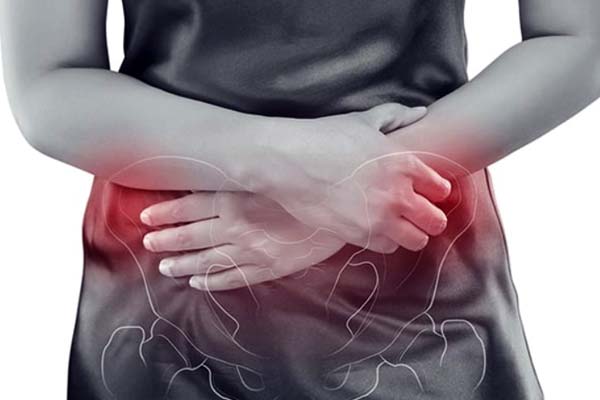Fibromyalgia is a long-lasting health problem that impacts many people worldwide. One of the usual signs of fibromyalgia is pain in the pelvic area.
This pain can be debilitating and interfere with daily activities. So, knowing what this pain feels like and how to handle it is crucial.
Pelvic pain in fibromyalgia might happen because the nerves and muscles in the pelvic area are more sensitive. This can cause problems like pain, discomfort, and trouble when peeing or during intimate moments.
Remember that not everyone with fibromyalgia has pelvic pain, but it can be really upsetting for those who do.
Understanding what fibromyalgia pelvic pain feels like is crucial for effective management. People with fibromyalgia may describe pelvic pain as aching, throbbing, burning, or stabbing.
The pain could be non-stop or come and go, which can change how strong it is. The pain sometimes comes with other issues like feeling tired, sad, or worried.

Symptoms of Fibromyalgia Pelvic Pain
Fibromyalgia pelvic pain is a complex condition that can cause persistent pain in and around the pelvic cavity. The pain can manifest in various ways, such as a deep, persistent ache or sharp, stabbing sensations.
How bad and what kind of pain people have can differ for each person, and it could change as time passes.
Besides pain, people with fibromyalgia pelvic pain might also have trouble with peeing and bowel movements.
This can include needing to go urgently, going more often, or being unable to control it. These problems can really affect someone’s life, and might need help from a doctor.
It is important to note that fibromyalgia pelvic pain affects both men and women, but the specific symptoms and severity can differ. Women may experience more intense pain during menstruation, while men may report pain in the testicles or scrotum.
Other problems linked to fibromyalgia pelvic pain are feeling tired, stiff, and having trouble thinking. These issues can make doing everyday things hard and significantly affect a person’s overall happiness and health.
It is essential for individuals experiencing fibromyalgia pelvic pain to seek medical attention to manage their symptoms effectively. Some ways to treat it might be taking medicine, going to physical therapy, or changing their life by exercising and learning to deal with stress better.
Fibromyalgia pelvic pain is a complex condition that can cause persistent pain and urinary and colorectal dysfunction. The specific symptoms and severity can differ between men and women.

Causes of Fibromyalgia Pelvic Pain
Managing fibromyalgia pelvic pain can be a complex and challenging task. The precise cause of fibromyalgia remains uncertain, but various factors may contribute to pelvic pain in individuals affected.
The musculoskeletal system plays a significant role in fibromyalgia pelvic pain. The increased sensitivity of nerves and muscles in the pelvic region can lead to pain and discomfort. The muscles in the pelvic region may become tense and painful, leading to chronic pain and discomfort.
The muscles that help hold up the pelvic organs can get tight and cause pain in people with fibromyalgia, hurting their pelvic area. When these muscles are tense and painful, it can make things like having sex, peeing, and going poop hurt too.
Various factors can trigger or exacerbate fibromyalgia pelvic pain, such as stress, hormonal changes (e.g., during menstruation), and specific activities or positions.
Stress can cause muscle tension and trigger a fibromyalgia flare-up, leading to pelvic pain. Hormonal changes during menstruation can also contribute to pelvic pain in women with fibromyalgia.
Fibromyalgia pelvic pain can be a challenging and complex condition. The musculoskeletal system, pelvic floor muscles, and various triggers can all contribute to developing pelvic pain in people with fibromyalgia.

Treatment Options for Fibromyalgia Pelvic Pain
Several treatment options are available to manage fibromyalgia pelvic pain. These options include medications, physical therapy, and lifestyle changes.
Medications: Pain Relievers, Antidepressants, and More
Fibromyalgia pelvic pain can be challenging to manage, but various medications are available to help alleviate symptoms.
The medications used to manage fibromyalgia pelvic pain consist of over-the-counter pain relievers, prescription antidepressants, and muscle relaxants.
We will explore each medication type in detail to provide a comprehensive understanding of its role in managing fibromyalgia pelvic pain.
Over-the-Counter Pain Relievers
Over-the-counter (OTC) pain relievers are non-prescription medications that can help with mild to moderate pain. Common OTC pain relievers include:
- Acetaminophen (Tylenol): This medication can help alleviate pain and reduce fever. Following the recommended dosage is essential, as excessive use can lead to liver damage.
- Nonsteroidal anti-inflammatory drugs (NSAIDs): These medications, such as ibuprofen (Advil, Motrin) and naproxen (Aleve), can help reduce inflammation and relieve pain. They should be used cautiously in individuals with a history of stomach ulcers or kidney issues.
Prescription Antidepressants
Antidepressants can help manage fibromyalgia pain and improve sleep quality and overall well-being. Some common prescription antidepressants include:
- Duloxetine (Cymbalta): This serotonin-norepinephrine reuptake inhibitor (SNRI) can help manage pain and improve mood.
- Milnacipran (Savella): Another SNRI, milnacipran, can help reduce pain and enhance physical capabilities for individuals suffering from fibromyalgia.
- Amitriptyline (Elavil): This tricyclic antidepressant can help improve sleep and alleviate pain. It is often prescribed in smaller doses for fibromyalgia patients.
Muscle Relaxants
Muscle relaxants can help reduce muscle tension and spasms, relieving pelvic pain from fibromyalgia. Some commonly prescribed muscle relaxants include:
- Cyclobenzaprine (Flexeril): This medication can help alleviate muscle spasms and pain and improve sleep quality in fibromyalgia patients. It should be used cautiously in individuals with a history of heart problems.
- Tizanidine (Zanaflex): This medication can help relieve muscle spasms and may be an alternative to cyclobenzaprine.
Physical Therapy: Pelvic Floor Exercises and Stretching
Physical therapy, including pelvic floor exercises and stretching, can help strengthen and relax the pelvic muscles, reducing pain and discomfort.
Pelvic floor exercises, like Kegels, can help improve bladder and bowel control and reduce pelvic pain. Stretching exercises can also help improve flexibility and reduce muscle tension.
Lifestyle Changes: Stress Reduction, Sleep Hygiene, and More
Healthy lifestyle habits can help improve overall well-being and reduce fibromyalgia pelvic pain. Using ways to lessen stress, such as meditation and deep breathing, can aid in handling pain and boosting your mood.
Keeping up with healthy sleep habits, like having a regular sleep routine and not having caffeine before bedtime, can improve your sleep. Doing low-impact exercises like walking or swimming can also help improve physical function and reduce pain.
Conclusion
Fibromyalgia pelvic pain is a prevalent and often disabling symptom experienced by those with fibromyalgia. Even though we don’t quite understand the exact cause of fibromyalgia pelvic pain, it is thought to be related to sensitization of the central nervous system.
Treatment options include medications, physical therapy, and lifestyle changes. Consulting a healthcare professional for proper diagnosis and personalized treatment is crucial.
Relief and improved quality of life are achievable with appropriate treatment and support.
In summary, fibromyalgia pelvic pain can be a challenging symptom to manage, but with the proper treatment and support, it is possible to find relief and improve quality of life.

 Melinda Miles is a courageous fibromyalgia warrior living with the condition for over 10 years. She is an advocate and voice in the fibromyalgia community, having created an online blog, TheFibrowarriors.com, to provide education, support, and community for those affected by this often misunderstood condition.
Melinda Miles is a courageous fibromyalgia warrior living with the condition for over 10 years. She is an advocate and voice in the fibromyalgia community, having created an online blog, TheFibrowarriors.com, to provide education, support, and community for those affected by this often misunderstood condition.